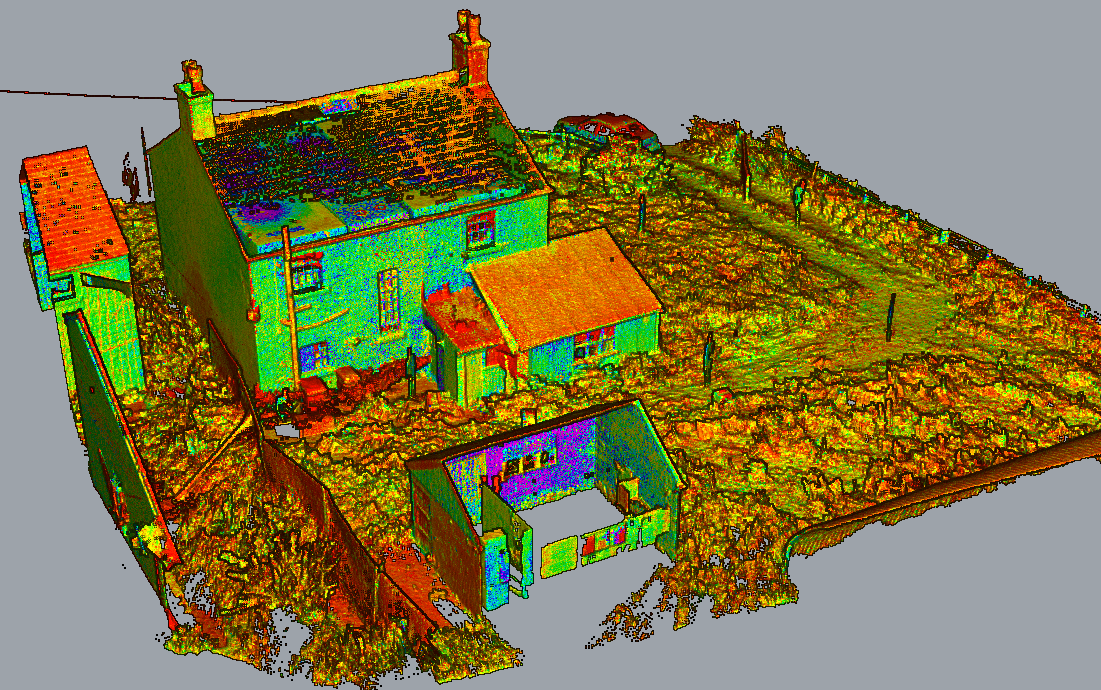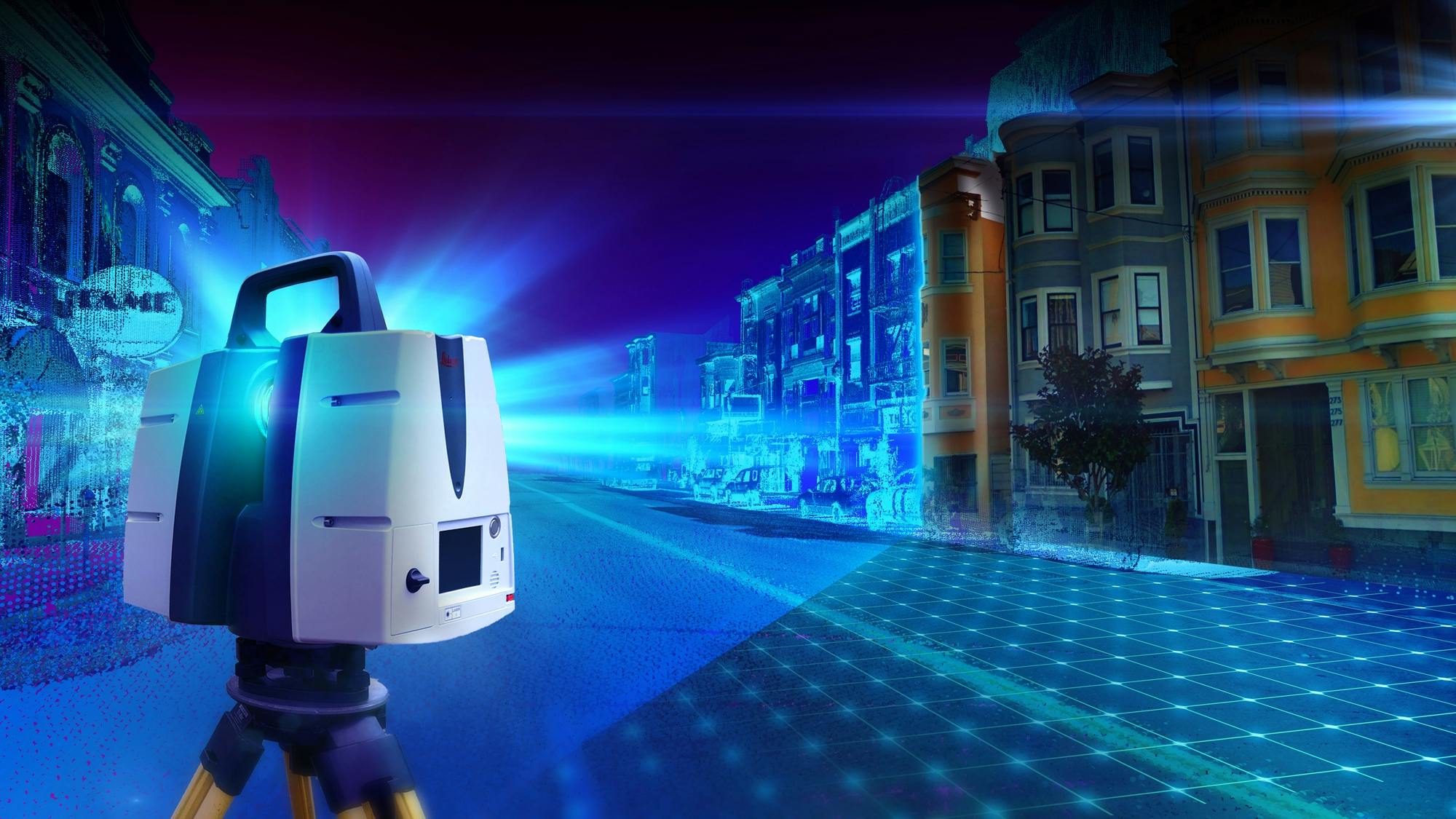How 3D Scanning Enhances Team Communication in Architecture
Wiki Article
Enhancing Production Processes: The Impact of 3D Laser Scanning on Quality Assurance
3D laser scanning innovation is transforming quality control in production. By providing high-resolution data and specific measurements, it enables makers to identify inconsistencies from specs easily. This improvement not just enhances examination processes however additionally enhances operational effectiveness. 3D Scanning. The application of this technology comes with its very own set of difficulties. Exploring these aspects exposes the wider ramifications for sectors and the future landscape of manufacturing
Recognizing 3D Laser Scanning Innovation
3D laser scanning modern technology has advanced substantially in current years, its basic concept stays simple: capturing the exact geometry of items making use of laser light beams. This technology uses laser light to measure ranges in between the scanner and different factors on a things's surface. The data gathered is after that refined to develop a detailed 3D version, accurately reflecting the dimensions and shapes of the checked things.Generally, 3D laser scanners can be classified right into two main types: contact and non-contact scanners. Contact scanners physically touch the things to collect dimensions, whereas non-contact scanners use laser beam of lights to catch information from a distance. The adaptability of this innovation enables its application across various industries, consisting of production, design, and building and construction. Its capacity to produce high-resolution models assists in quality assurance, reverse design, and fast prototyping, inevitably boosting layout accuracy and efficiency in production procedures.
Benefits of 3D Laser Scanning in Manufacturing
As manufacturers seek to improve performance and precision in their procedures, the advantages of 3D laser scanning have actually come to be progressively apparent. This ingenious modern technology allows for very accurate and fast dimensions of intricate geometries, considerably lowering the time needed for high quality checks. By capturing detailed data, makers can recognize disparities early in the production process, therefore minimizing waste and remodel prices.3D laser scanning facilitates far better layout recognition, making it possible for engineers to contrast as-built conditions with initial requirements. This capability guarantees that any type of deviations are immediately addressed, improving total item top quality. Furthermore, the modern technology supports the production of digital twins, which can be made use of for simulations and process optimizations. Because of this, makers not just increase their functional efficiency yet likewise improve their affordable benefit in the market. On the whole, the combination of 3D laser scanning represents a transformative action towards achieving greater requirements in making quality assurance.
Assimilation of 3D Laser Scanning Into Quality Assurance
Incorporating 3D laser scanning into quality assurance procedures enhances the accuracy and performance of evaluations throughout production. This innovation allows makers to capture in-depth, high-resolution information of assemblies and elements, allowing for exact measurements and contrasts versus style specs. By employing 3D laser scanning, companies can recognize deviations from resistances better, which is vital for preserving item integrity.
Real-World Applications and Instance Researches
Real-world applications of 3D laser scanning in producing demonstrate its transformative impact across various industries. Aerospace business use this innovation to carry out accurate assessments of components, guaranteeing they meet stringent safety and security criteria. A notable situation included a leading airplane manufacturer that employed 3D laser scanning to enhance its quality assurance processes, significantly minimizing evaluation times and mistakes.In the automobile field, suppliers have actually executed laser scanning to produce electronic doubles of their lorries, allowing real-time modifications throughout production. One auto firm reported a 30% try here reduction in rework prices after integrating this technology into their setting up lines.
In the consumer products industry, companies are using 3D laser scanning for quick prototyping, permitting for quicker iterations and boosted product designs. These applications illustrate exactly how 3D laser scanning not only improves precision however likewise enhances effectiveness and innovation across numerous production domains.
Getting Over Difficulties in Execution
Carrying out 3D laser scanning in making presents several obstacles that companies must navigate to completely understand its benefits. One substantial hurdle is the first price of equipment and software program, which can discourage companies from adopting this modern technology. Additionally, integrating 3D laser scanning into existing workflows needs getting over resistance to transform among employees, demanding extensive training programs to ensure effectiveness. Data management additionally positions an obstacle, as the high volume of information generated by 3D scanning have to be properly processed and evaluated to acquire workable insights. Moreover, compatibility issues with legacy systems may impede seamless integration, demanding prospective upgrades or adjustments. Addressing these obstacles is essential for manufacturers aiming to boost high quality control and enhance manufacturing procedures. By creating clear techniques for training, financial investment, and data administration, firms can minimize these barriers and release the transformative possibility of 3D laser scanning in their operations.Future Fads in 3D Laser Scanning for Production
As making continues to develop, the integration of 3D laser scanning with increased automation is expected to transform production procedures. Enhanced information analytics will play an important role in enhancing and enhancing workflows quality control. These trends highlight the capacity for higher effectiveness and precision in producing settings.
Enhanced Automation Integration
The combination of automation in production has actually been gradual, the future of Check This Out 3D laser scanning is positioned to increase this trend substantially. As manufacturing processes end up being progressively intricate, the need for precise, real-time dimensions expands. 3D laser scanning technology provides automated information capture, decreasing labor expenses and lessening human mistake. This combination allows manufacturers to enhance high quality control processes, enabling quick detection of variances in production. Furthermore, the alignment of 3D laser scanning with robotics and automated systems promotes smooth procedures, boosting general efficiency. As producers embrace these innovative innovations, they can expect improved accuracy and performance, positioning themselves competitively in a rapidly progressing market. The harmony in between automation and 3D laser scanning notes a significant jump onward in manufacturing development.Boosted Data Analytics
The combination of automation has actually led the method for advancements in data analytics within the domain name of 3D laser scanning. Manufacturers are progressively leveraging sophisticated algorithms and artificial intelligence methods to evaluate large datasets produced by laser scans. This enhanced data analytics capacity permits for real-time monitoring of manufacturing procedures, making it possible for the recognition of problems and discrepancies more properly than standard methods. Anticipating analytics can visualize possible concerns, considerably minimizing downtime and enhancing overall performance. Additionally, the ability to imagine information in three dimensions supplies much deeper understandings into manufacturing operations, promoting much better decision-making. As 3D laser scanning modern technology remains to progress, the role of data analytics will certainly become progressively crucial in driving innovation and preserving affordable benefit in manufacturing.Often Asked Concerns
What Industries Advantage the A Lot Of From 3D Laser Scanning?
The industries that benefit most from 3D laser scanning include manufacturing, building, aerospace, automotive, and medical care. These fields utilize the modern technology for precision dimensions, top quality guarantee, and effective layout processes, substantially boosting general functional efficiency.Exactly How Does 3D Laser Scanning Compare to Standard Measurement Approaches?
3D laser scanning offers greater precision and rate compared to conventional dimension techniques. It captures thorough geometries promptly, minimizing human error and promoting much better analysis, which inevitably boosts general quality control in numerous sectors.What Is the Cost of Carrying Out 3D Laser Scanning Modern Technology?
The cost of implementing 3D laser scanning technology differs considerably, typically varying from $10,000 to $100,000, relying on software, training, and equipment. Organizations should consider these expenditures against prospective performance and quality enhancements.Exist Certain Software Program Demands for 3D Laser Scanning?
Yes, 3D laser scanning needs details software program, including data handling and modeling applications. Common options include CAD software application, point cloud processing tools, and specialized applications that promote the integration and analysis of scanned information for suitable results.Exactly how Long Does a Regular 3D Laser Scanning Refine Take?
A regular 3D laser scanning procedure can take anywhere from a few mins to several hours, relying on elements like the dimension of the things, complexity of the atmosphere, and needed level of detail for accuracy.3D laser scanning modern technology is transforming quality control in production. 3D laser scanning technology has developed substantially in recent years, its fundamental concept continues to be uncomplicated: recording the specific geometry of things utilizing laser beam of lights. Incorporating 3D laser scanning right into high quality control processes enhances why not try these out the accuracy and performance of inspections throughout manufacturing (3D Scanning). 3D laser scanning modern technology offers automated data capture, lowering labor prices and decreasing human mistake. The price of executing 3D laser scanning innovation varies considerably, typically ranging from $10,000 to $100,000, depending on equipment, software, and training
Report this wiki page